linear regression
1/12
There's no tags or description
Looks like no tags are added yet.
Name | Mastery | Learn | Test | Matching | Spaced |
|---|
No study sessions yet.
13 Terms
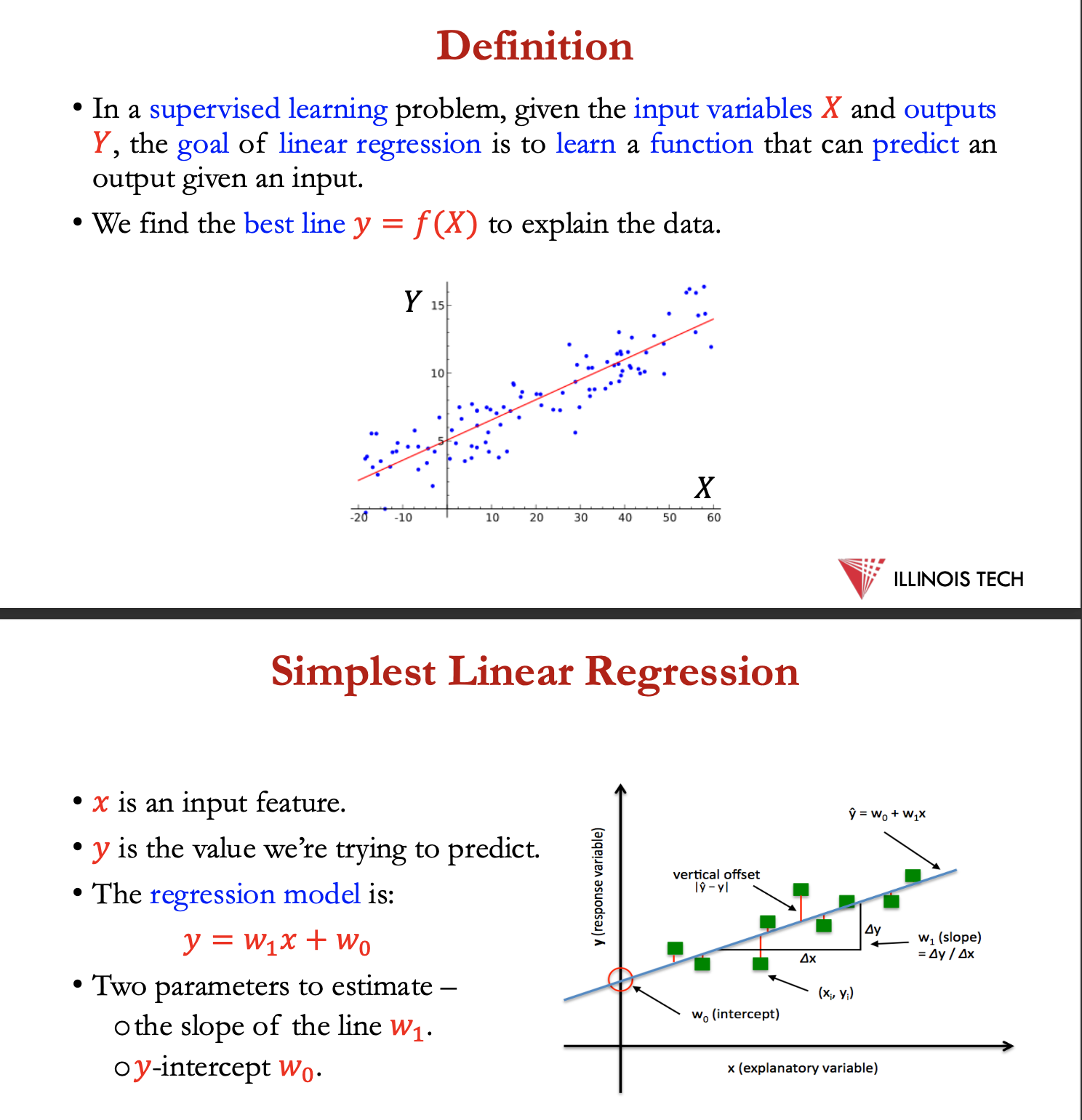
definition
supervised learning problem, given input variables + outputs Y, goal of LR = learn function that can predict an output given an input
find the best line y = f(X) to explain the data
simplest LR
x = input feature
y = value we’re trying to predict
regression model → y = w1x +w0
- 2 parameters to estimate: the slope of the line w1 and y intercept w0
basically want to find {w0, w1} that minimise derivations from the predictor line
min w0,w1 ∑ (yi - w1xi - w0)
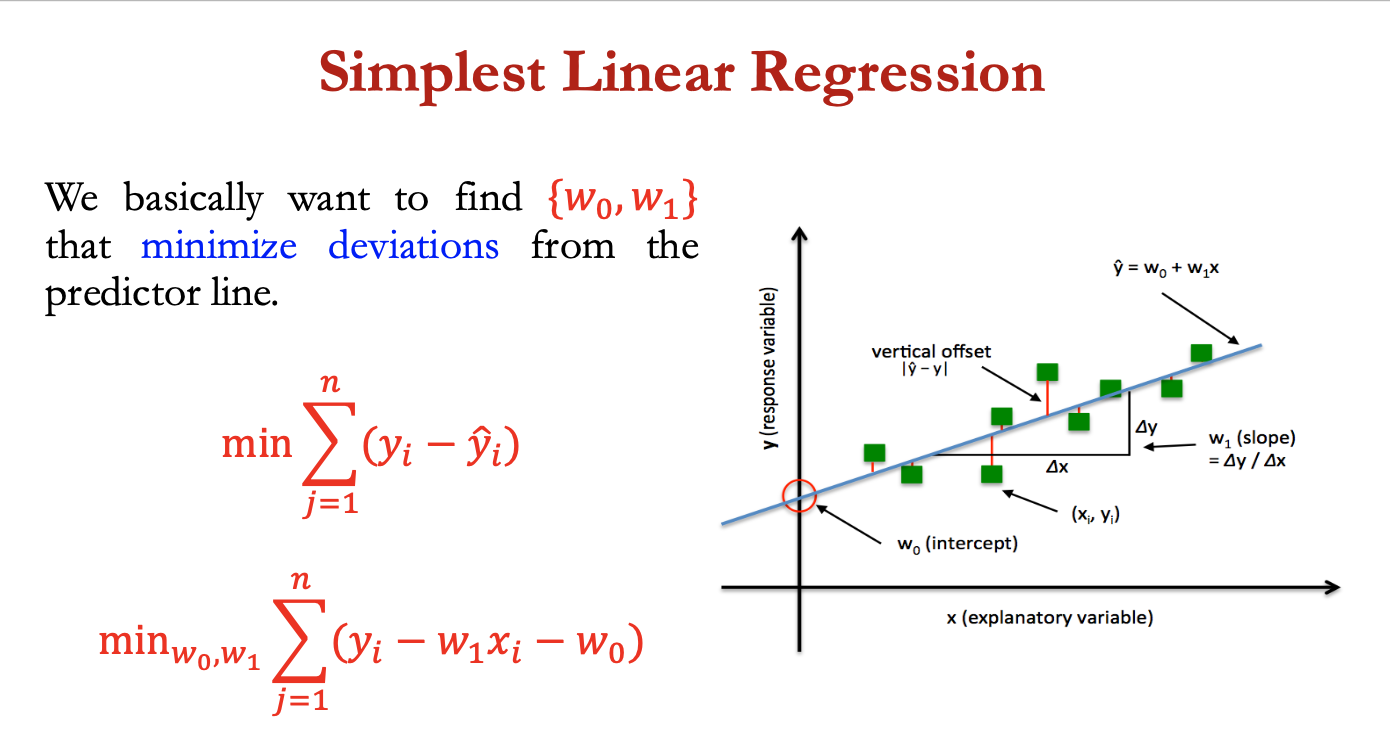
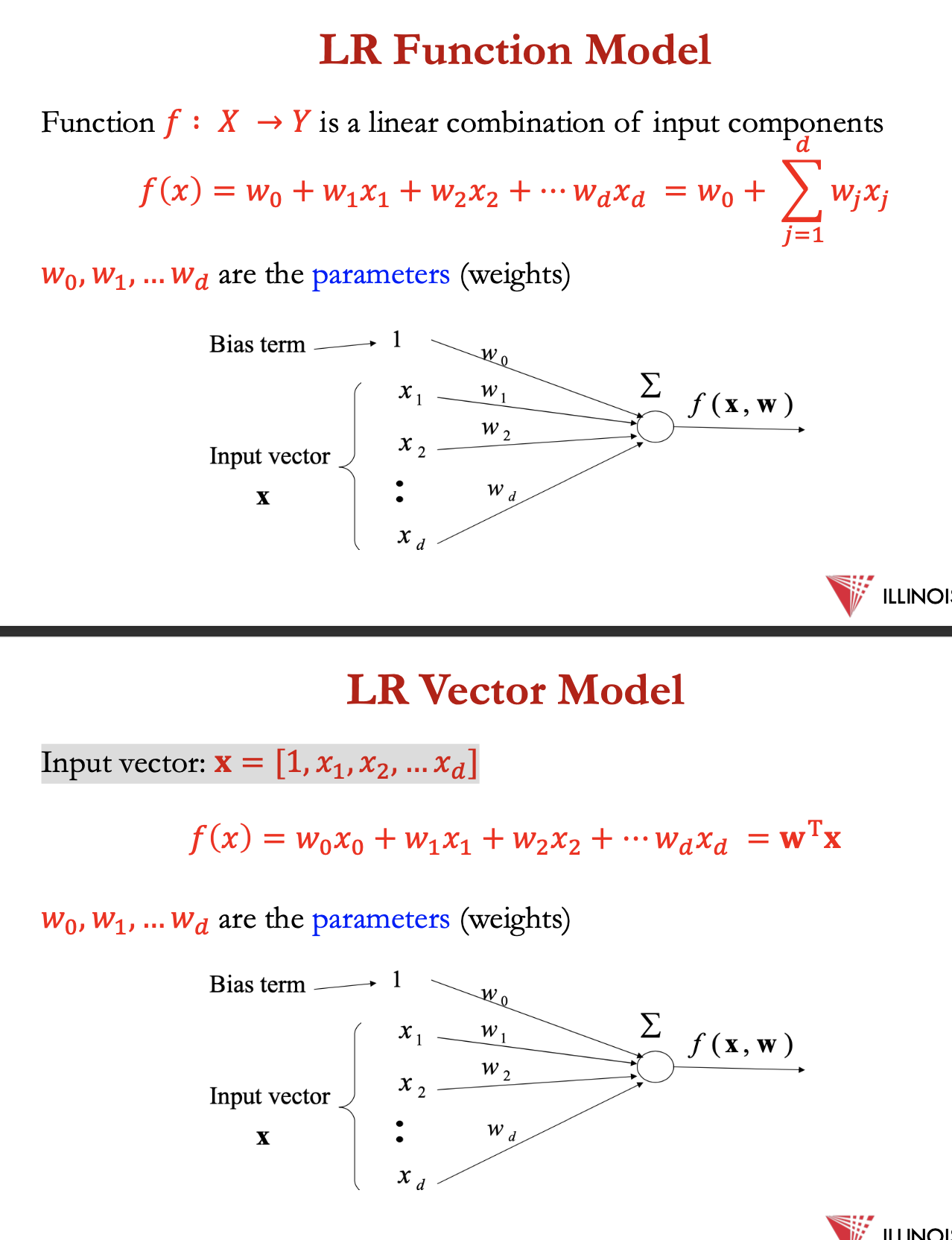
LR function model
function f: X → Y = linear combo of input components
f(x) = w0 + w1x1 + w2×2 + … + wdxd = w0 + ∑ wjxj
w0, w1, wd = parameters (weights)
Input vector: 𝐱 = [1, 𝑥1, 𝑥2, ... 𝑥𝑑]
f(x) = f(x) = w0 + w1x1 + w2×2 + … + wdxd = wTx
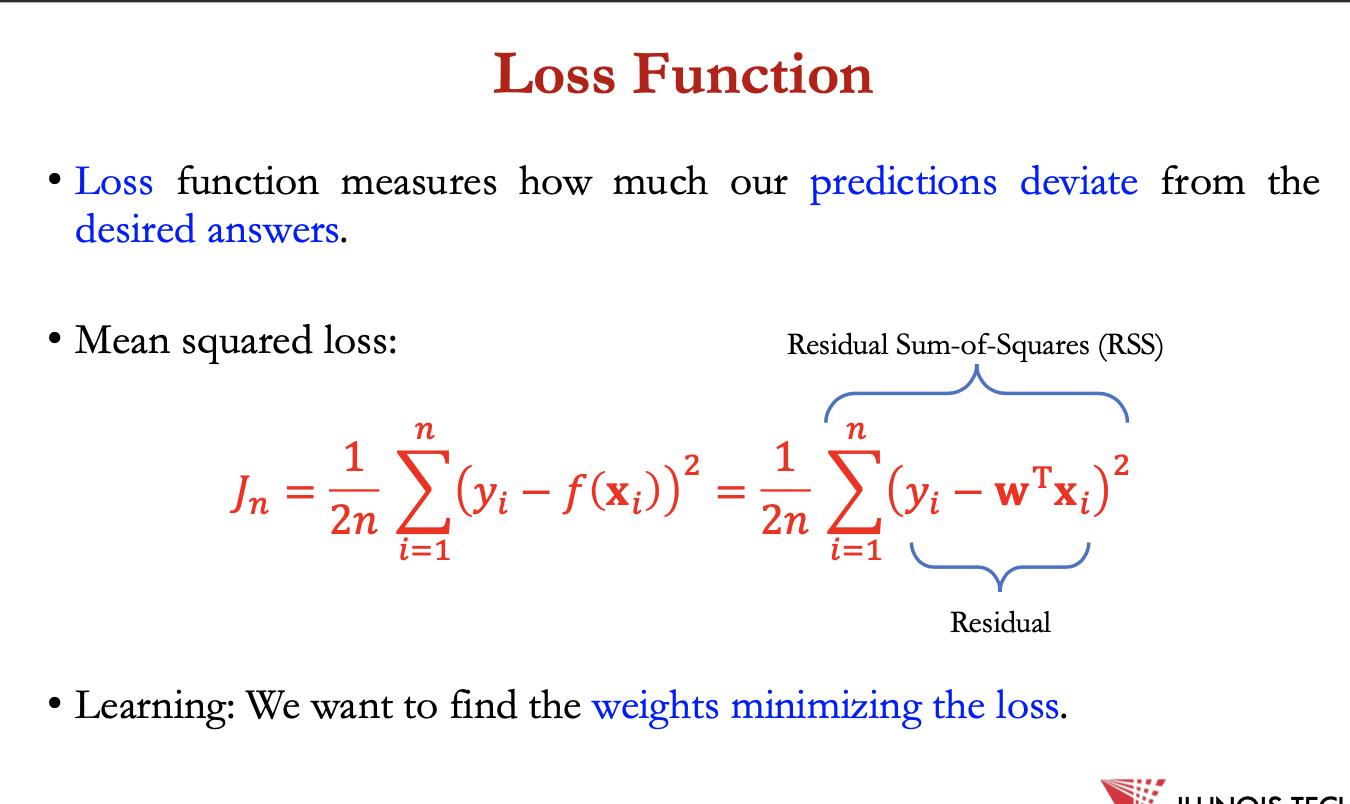
loss func
measures how much out predictions deviate from the desired answers
Mean square loss:
1/2n ∑ (yi - f(xi))² = 1/2n ∑ (yi - wTxi)²
learning - find weights minimising the loss
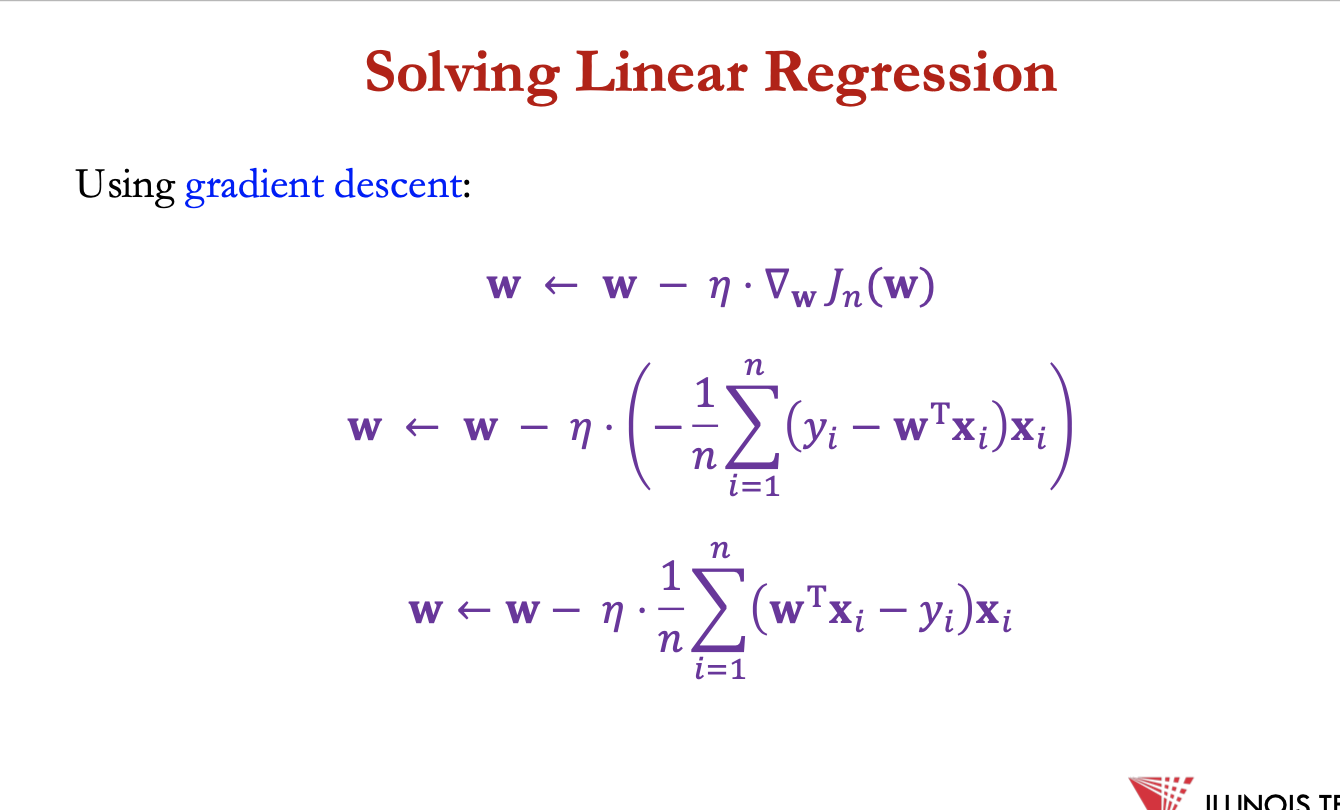
solving LR
using gradient descent:
𝐰←𝐰−𝜂⋅∇ 𝐽n(𝐰)
𝐰←𝐰−𝜂⋅ (−1/𝑛 ∑ (𝑦𝑖−𝐰T𝐱𝑖) 𝐱𝑖)
𝐰←𝐰−𝜂⋅1/𝑛 ∑ (𝐰T𝐱𝑖 −𝑦𝑖) 𝐱𝑖
online LR
the loss function defined for the whole dataset for LR =
1/2n ∑ (𝑦𝑖 - f(𝐱𝑖))²
online GD - use most recent sample at each iteration
instead of mean squared loss, use squared loss for individual sample
𝐿𝑜𝑠𝑠𝑖(𝐰) = ½ ∑ (𝑦𝑖 - f(𝐱𝑖))²
𝐰 ← 𝐰 − 𝜂 ⋅ ∇𝐰 𝐿𝑜𝑠𝑠𝑖(𝐰)
𝐰←𝐰−𝜂⋅(𝑓(𝐱𝑖) −𝑦𝑖) ⋅𝐱𝑖
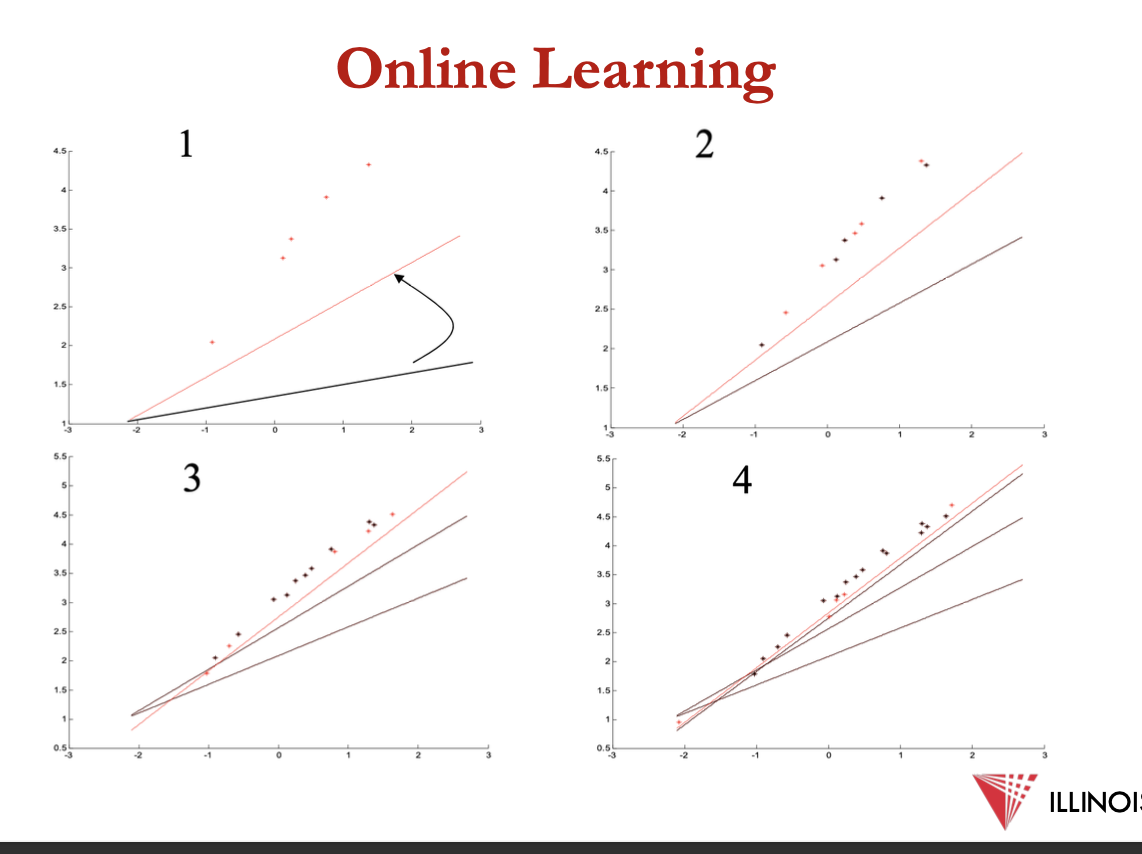
input normalisation
makes data vary roughly on the same scale
can make a huge diff in online learning
𝐰←𝐰−𝜂⋅(𝑓(𝐱𝑖) −𝑦𝑖) ⋅𝐱𝑖
for inputs w large magnitude, the change in weight = huge
solution: makes all inputs vary in same range
𝑥 bar j =1/n ∑ xi,j
𝜎² j = 1/ (n-1) ∑ (xij- xbarj)²
new output:
= xij - xbarj / 𝜎j
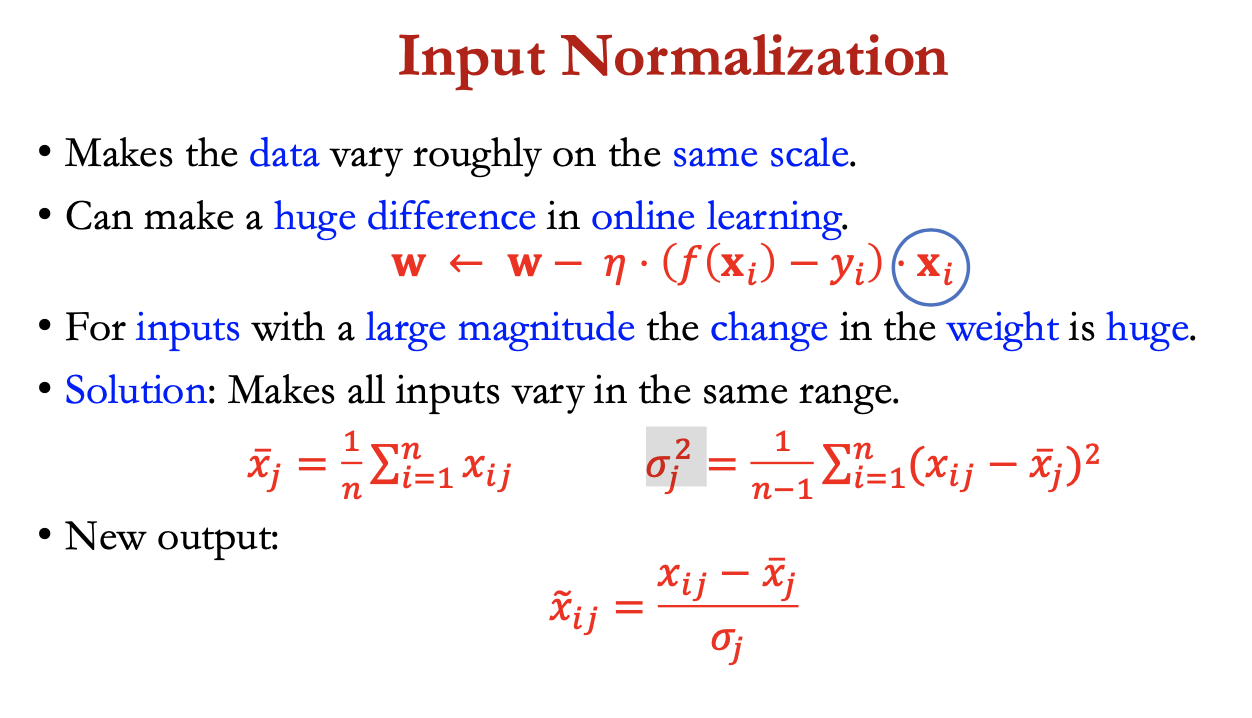
L1/L2 regularisation
using L1/L2 regularisation, can rewire loss function as:
Llasso = 1/2n ∑ (yi - f(wTxi))² + 𝜆 ||w||1
Bridge = 1/2n ∑ (yi - f(wTxi))² + 𝜆 ||w||22
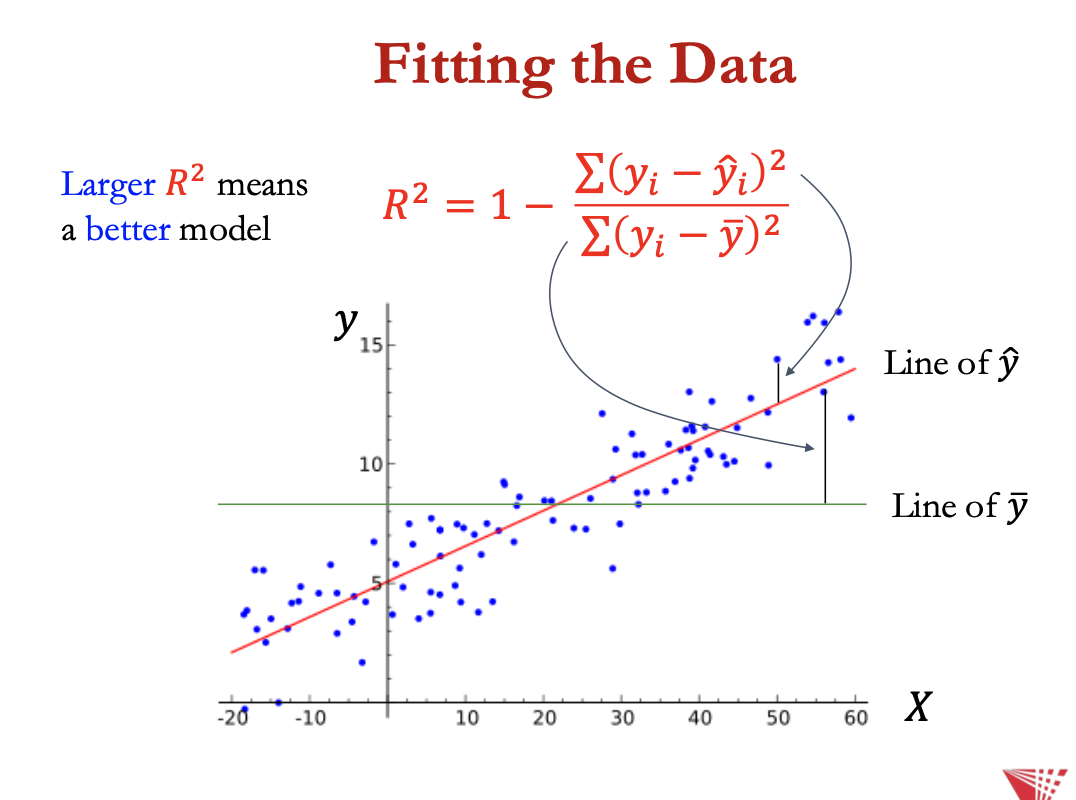
fitting the data
R² metric determines how well the learned model fits the dataa
R² captures the fraction of the total variance explained by the model
let ŷi = predicted value, and y bar = sample mean, R² =
1- residual variance/total variance = 1 - ∑ (yi - ŷi)²/ ∑ (yi - ybar)²
lower residual variance = predicted vans closer to actual values = good model
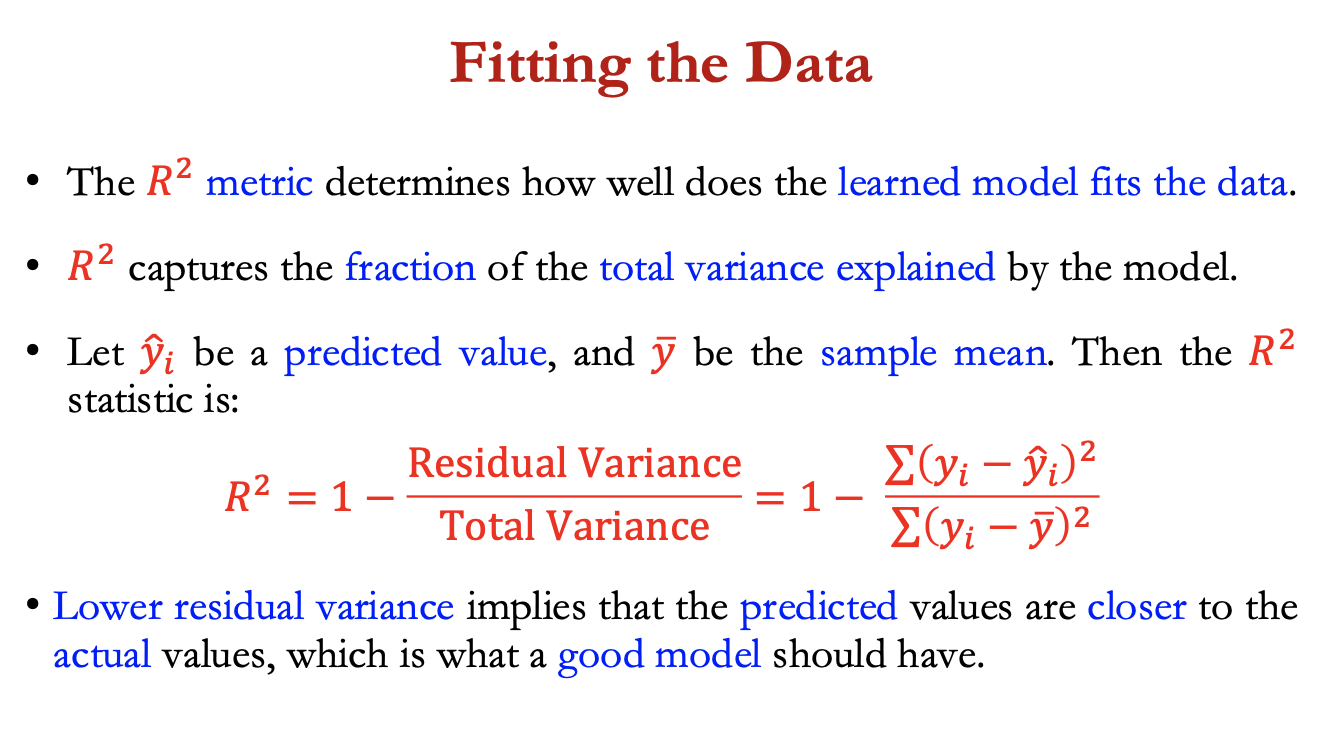
bias variance tradeoff
bias captures inherent error present in model
bias error comes from erroneous assumptions in learning algo
bias = contrast between mean prediction of out model + correct prediction
variance captures how much model changes if trained on a diff training set
variance = variation / spread of model prediction values across diff data sampling
bias-variance - conflict in trying to minimise both at same time - these two sources of error that prevent supervised learning algorithms from generalizing beyond their training set
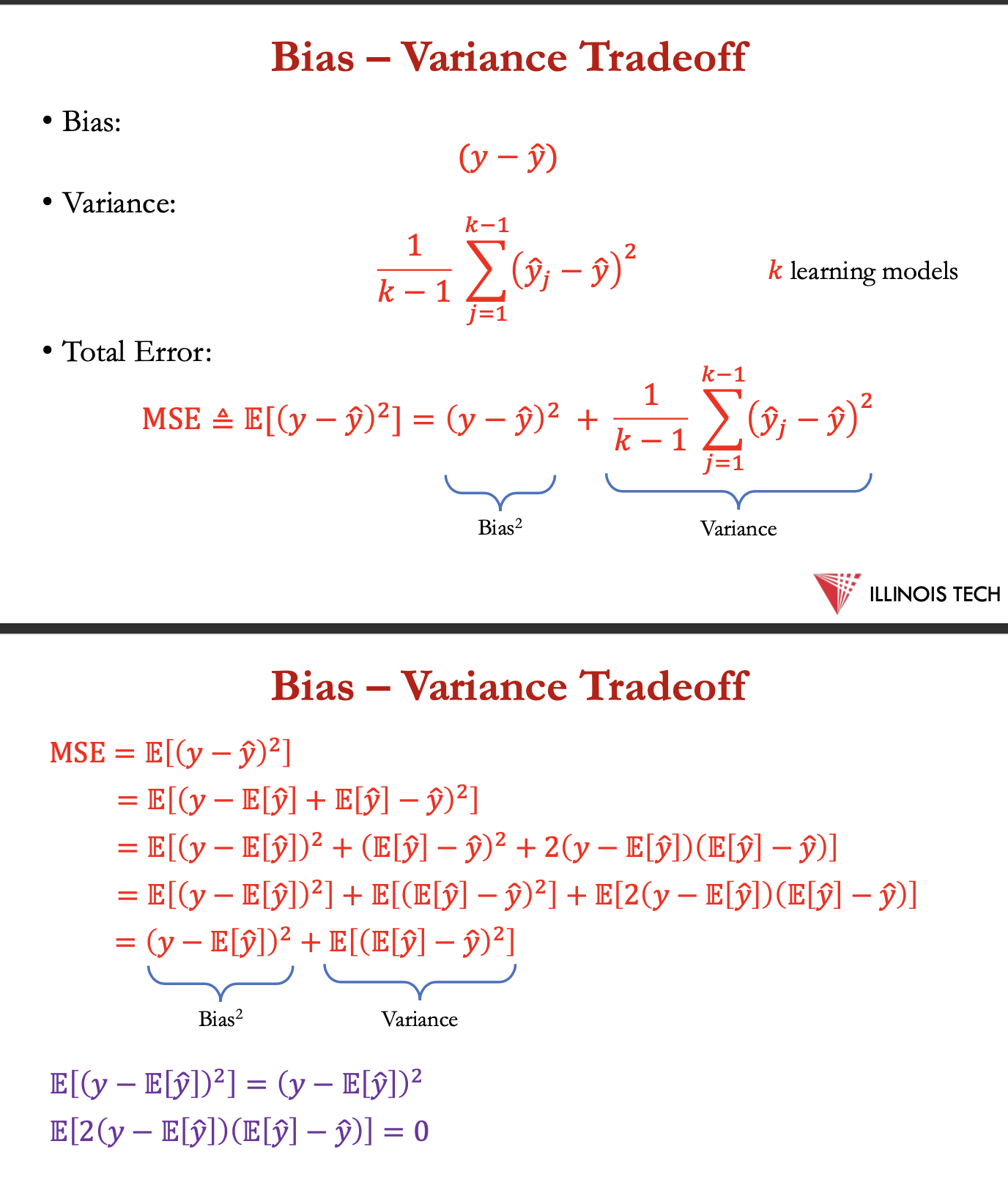
cont
underfitting = model unable to capture underlying pattern of data = high bias + low variance
when v. less amt of data to build accurate model or linear model used to learn non linear data
overfitting = model captures noise along w the underlying pattern in data
model is trained a lot over noisy dataset → low bis + high variance
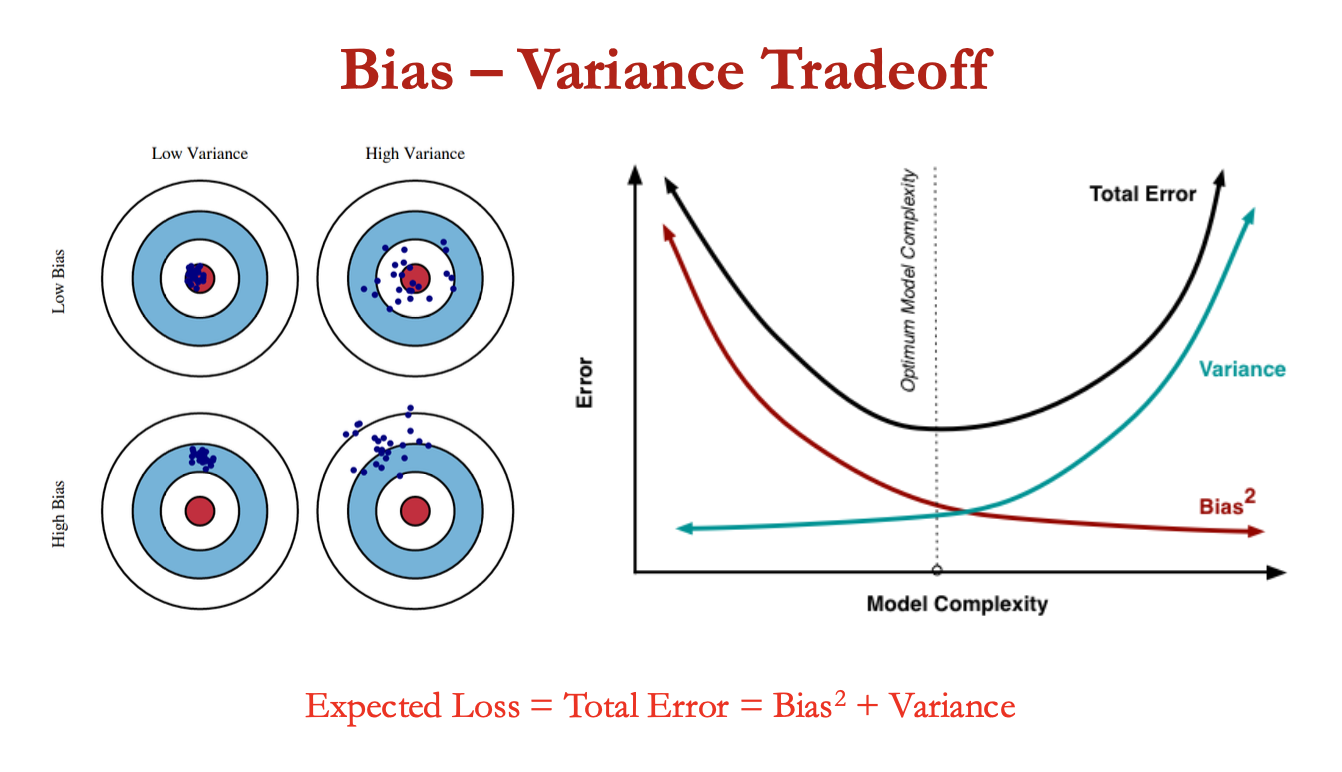
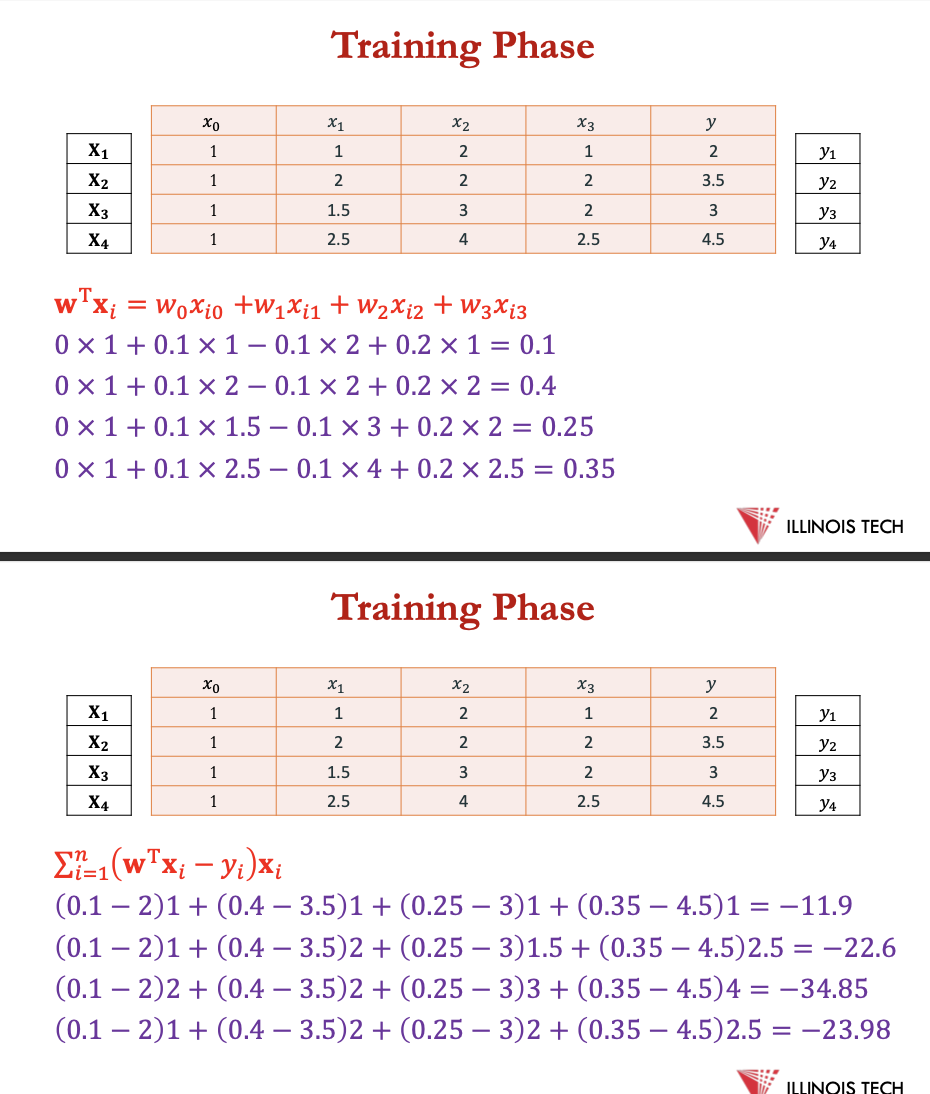
example- predicting price
In this dataset, we have 3 input features: Sq ft, Bedrooms, Bathrooms and the output is Price.
• Let us apply linear regression on the price prediction problem, assuming 𝜂 = 0.1 and starting with 𝐰 = [0.0, 0.1, −0.1, 0.2 ]
𝐰←𝐰−𝜂⋅1/𝑛∑ (𝐰T𝐱𝑖−𝑦𝑖) 𝐱𝑖
𝐰T𝐱=𝑤0𝑥i0 +𝑤1𝑥i1 +𝑤2𝑥i2 +𝑤3𝑥i3
![<p><span>In this dataset, we have 3 input features: Sq ft, Bedrooms, Bathrooms and the output is Price.</span></p><p><span>• Let us apply linear regression on the price prediction problem, assuming 𝜂 = 0.1 and starting with 𝐰 = [0.0, 0.1, −0.1, 0.2 ]</span></p><p></p><p><span>𝐰←𝐰−𝜂⋅1/𝑛∑ (𝐰<sup>T</sup>𝐱𝑖−𝑦𝑖) 𝐱𝑖</span></p><p></p><p>𝐰<sup>T</sup>𝐱<span>=𝑤0𝑥i0 +𝑤1𝑥i1 +𝑤2𝑥i2 +𝑤3𝑥i3<br></span></p>](https://knowt-user-attachments.s3.amazonaws.com/78221347-1b48-45b7-a46a-2587b40bb1c6.png)
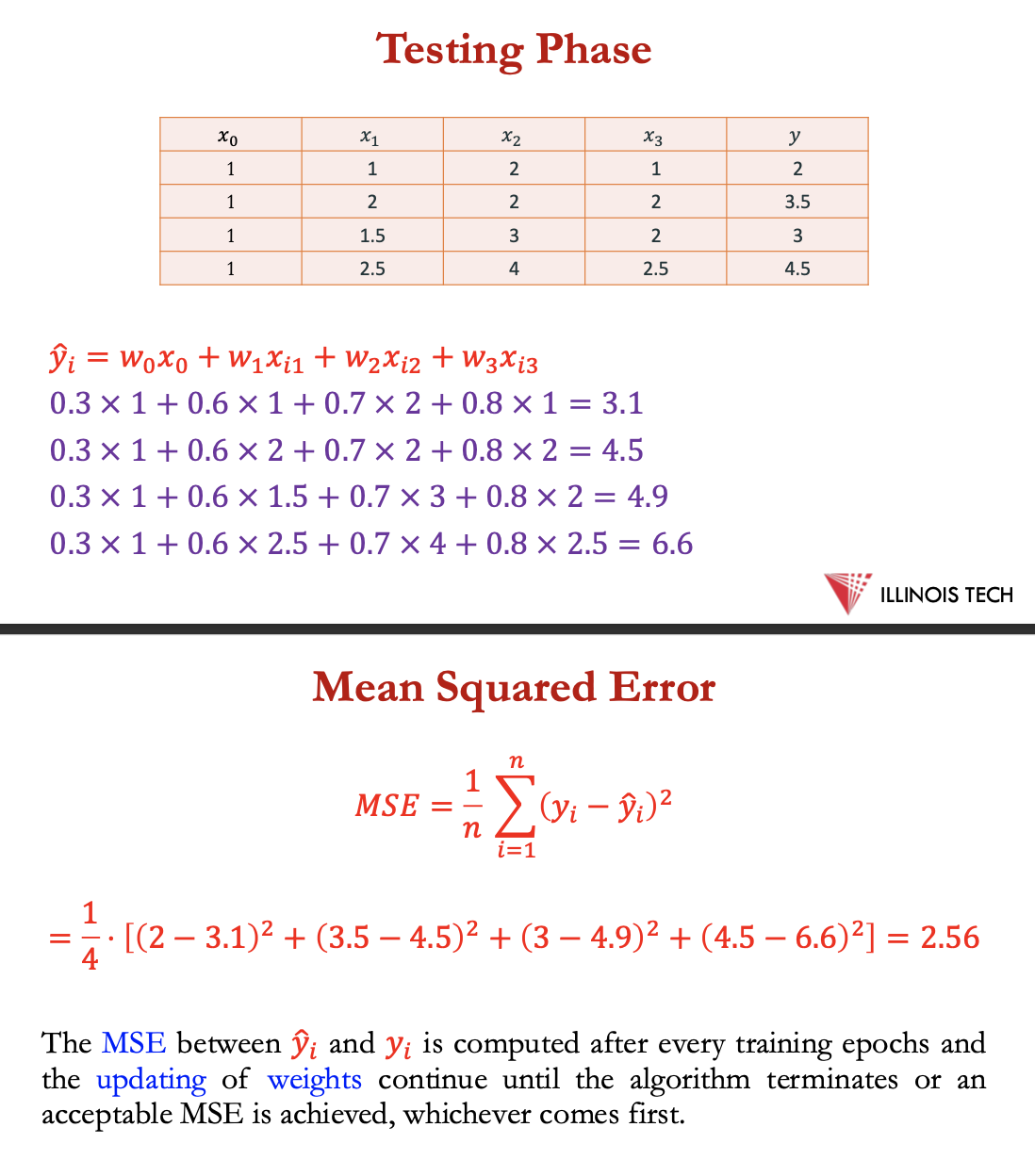
cont - testing + MSE
conclusion
oSimple to implement and easy to interpret.
oComputationally efficient and can handle large datasets effectively.
oIt serves as a good baseline model to compare against more complex regression models.
• Weaknesses:
oUnsuitable for non-linear relationships since it assumes a linear
relationship between variables.
oCan be susceptible to outliers.